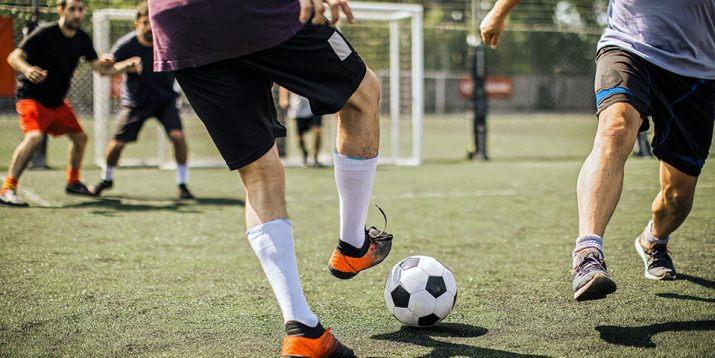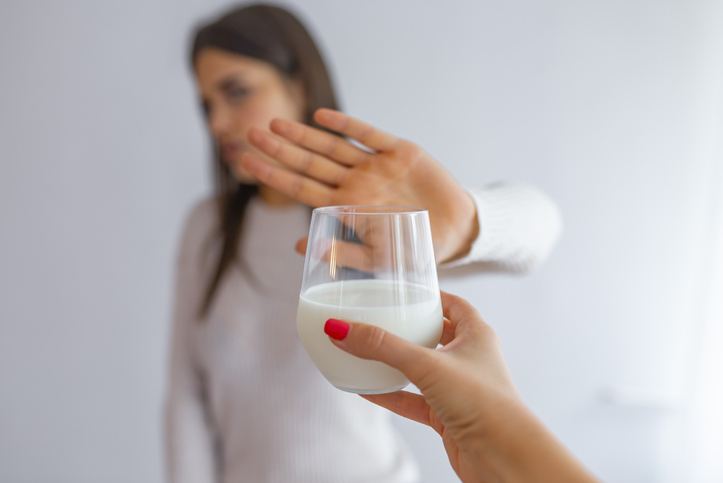Everything You Know About Lactic Acid Is Wrong

For a semi-serious athlete, Jeremy Rosenberg is not unusual. The Los Angeles-based book editor is a weekend warrior on the city’s soccer fields but says he pays for it after most games.
“A couple of hours after I play I feel like what I imagine a whirling dervish does: A post-ecstatic mental state combined with being totally physically drained,” says Rosenberg. “As long as I don’t stop playing, I feel great. But stopping means soreness.”
Rosenberg and his fellow players don’t pretend to be physical therapists or exercise scientists, but they confidently throw around the same term to explain their aching muscles: Lactic acid buildup.
Sounds familiar, right? Only one problem. Rosenberg, many trainers, and even some physicians are making the same mistake — lactic acid isn’t what most people think it is.
What Is Lactic Acid?

“Lactic acid only exists in sour milk,” explains Lance Dalleck, Ph.D., an assistant professor of exercise and sport science at Western State Colorado University.
“One of the long-standing myths in exercise science and popular culture is that lactic acid causes fatigue,” Dalleck adds. But the body doesn’t actually produce lactic acid — not even during intense exercise.
What people actually mean by “lactic acid buildup”
What most people are referring to when they say “lactic acid” is actually “lactate” and it’s not responsible for the burn you feel in your legs after running intervals. Nor is it responsible for the soreness you may feel up to 48 hours after a tough workout, as many believe.
Indeed, it’s not a waste product of exercise at all. On the contrary, lactate helps to delay fatigue, and can even serve as a fuel for your muscles, says Dalleck.
How Lactate Got Confused With Lactic Acid
The whole misunderstanding dates back to a 1922 study by two British scientists, Otto Meyerhoff and Archibald V. Hill.
In their Nobel-Prize winning research investigating the energy capabilities of carbohydrate metabolism in skeletal muscle, they suggested that lactic acid is produced in humans as a side reaction to glycolysis (the breakdown of glucose to fuel muscle activity).
And that’s essentially how it’s been explained ever since: Lactic acid is a sort of residue from your muscles burning fuel, and its buildup is what causes the burn and ache athletes commonly experience during and after intense effort.
Because after all, acid burns, right?
What recent studies have found fairly conclusively is that while lactic acid — or more accurately, lactate — coincides with “acidosis” in muscles, it’s not the cause.
So How Does Lactic Acid Buildup Affect Muscles?

First, I thought we agreed to call it “lactate.” Second, a quick review of how the body uses and produces energy is probably in order.
There are two primary means by which physical activity is powered: aerobic metabolism, which requires oxygen, and anaerobic metabolism, which doesn’t. Both produce ATP, the body’s primary unit of energy, but anaerobic metabolism does it a lot faster, which is why it’s the primary energy system for high-intensity exercise.
But as a consequence, anaerobic metabolism also produces waste products — including hydrogen ions — faster than the body can mop them up. “It’s the increase in these ions that causes acidification, known as acidosis, and that does burn,” says Dalleck.
That’s why you likely start to “feel the burn” quickly during sprints and high intensity interval training (and even weightlifting) compared to, say, jogging. It’s also why you can’t sustain the former activities as long.
That burn typically kicks in at around 85 percent of your maximum heart rate, otherwise known as the lactate threshold. This is the point at which the body produces these protons faster than it can remove them.
As these protons build up during high-intensity exercise, pyruvate molecules (produced during the last step of glycolysis mentioned earlier) do too. And each of these pyruvate molecules absorbs two protons to create lactate, explaining its presence and why it’s erroneously implicated in muscle burn.
Thus, lactate production is actually a consequence of acidosis, not the cause and, much the same way a fever is the immune system’s way of combating infection, helps buffer its negative effects.
What’s more, during moderate to hard exercise, lactate can even be shuttled back into mitochondria (i.e., the power plant of a cell) and converted into energy.
But at some point during intense exercise, the buildup of protons overwhelms the ability of pyruvate to absorb them. That’s when you feel the burn, and that’s when you have to take matters into your own hands.
How to Prevent Exercise-Induced Acidosis
Your best bet here is beta-alanine, an amino acid that combines with another amino acid called L-histidine to create a substance called carnosine, which acts as a buffer against acid buildup in muscle tissue.
You’ll find carnosine in beef, but you’d need to eat a whole lot of it to receive an effective dose for improving exercise performance.
And since there’s already plenty of L-histadine circulating in your body, supplementing with beta-alanine is the most efficient method for creating performance-enhancing levels of carnosine at the cellular level.
Pro tip: Beta alanine is one of the primary ingredients in Beachbody Performance Energize.
Because it takes time to elevate carnosine concentration, results typically occur after one to two months of daily use.
The only common side effect from beta-alanine consumption is a harmless, but potentially uncomfortable symptom called “paresthesia.”
It’s characterized by a tingling sensation throughout the body, and most often occurs with high doses. If you experience paresthesia, try taking smaller (i.e., less than 800 mg) doses of beta-alanine throughout the day instead of one large one.
Does Lactate Cause Muscle Soreness?

Along with acidosis, lactate is also frequently blamed for delayed onset muscle soreness (DOMS), which can occur as soon as six hours after exercise, and usually peaks 48 hours afterward.
The blame is misplaced here as well, as DOMS is caused by micro-tears in the muscle, not the buildup of lactate. Still, there are several steps you can take to ease the ache.
1. Pop some ibuprofen (maybe)
The soreness you feel after a tough workout is the result of swelling and inflammation caused by the micro tears mentioned earlier.
Popping ibuprofen, which is an anti-inflammatory, can significantly reduce pain, according to a study by Greek researchers in the Journal of Strength and Conditioning Research.
But that relief may come at a price.
An ever-growing body of research has also linked NSAIDs (including ibuprofen) to everything from cardiovascular issues and intestinal dysfunction to suppressed protein synthesis post-exercise.
Occasionally taking a couple of capsules for muscle soreness is probably just fine — but give some serious thought before using it regularly.
2. Take tart cherry extract
Doing so can help reduce DOMS not only after a tough endurance workout but also after intense resistance training, according to two separate studies (available for viewing here and here) at Texas A&M University.
Both studies supported the results of previous research, showing that tart cherries can reduce muscle breakdown and inflammation, thereby reducing soreness.
3. Give yourself a massage
Using a foam roller to knead your muscles post-workout can significantly reduce DOMS, according to a study in the International Journal of Sports Physical Therapy.
Give each major muscle group at least five rolls, starting with your calves and working your way up your body. Spend extra time on sore spots.
4. Wear compression gear
People who wear compression garments after their workout experience less soreness and faster muscle recovery than people who wear a more traditional gym outfit, like a t-shirt and shorts, according to a study in the Journal of Sports Science and Medicine.
The reason: By compressing the muscle, such garments help reduce swelling and pressure.
